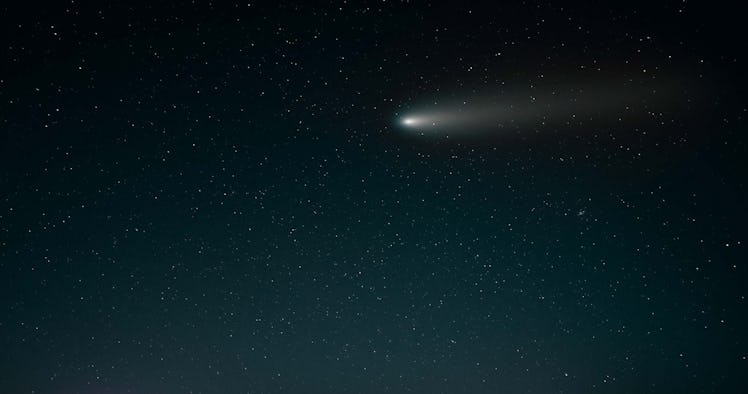A Cool Comet Will Whiz By Earth During July's Full Supermoon
The K2 comet is massive, and it's about to be closer to Earth than ever before. Here's what you need to know so you don't miss out.

Between the new images released by NASA of the photos taken by the James Webb Space Telescope and the beautiful Buck Moon we were privy to this month, the wonders of space are surely delighting us these days. But wait, there’s more! In July, right around the Full Supermoon that hits on July 13th, a comet — a viewable one — is going to whiz by, too. Don’t want to miss it? We don’t blame you. Here’s everything you need to know to catch the show.
What comet is set to fly through the skies this July?
According to Lifehacker, the comet coming up soon is called C/2017 K2 (PanSTARRS), but it’s also known by its nickname “K2.” The comet was first spotted in 2017, captured by the Hubble Space Telescope. This year will be the first time it’s made its way to the inner Solar System, according to NASA.
The comet is massive with a nucleus as large as between 18 and 100 miles wide, and that doesn’t include the trail of gas and dust that follows. CNet reports the trail of gas and dust behind the K2 comet is estimated to be between 81,000 and 500,000 miles across.
Despite its mega-large size, it’s not always easy to spot K2, which is why it’s going to be interesting to see this month, given it’s going to be closer to us than ever.
When will the K2 be visible and how can you see it?
The comet is still not likely to be visible by the human eye, but you can catch it if you have a decent telescope. According to EarthSky, “observers using a small telescope (preferably from a dark-sky site) should be able to see a diffuse or fuzzy patch of light (the coma) around the nucleus of comet C/2017 K2.”
The best chance to see the comet is on July 14, when it will reach its closest point to Earth. However, because this comet is so big, it’s likely to be visible with a telescope until September.
As Lifehacker points out, there’s going to be a live stream of the comet, too. So if you don’t have a telescope or you want to stay inside, the Virtual Telescope Project has you covered. The live stream will begin just after 6 p.m. ET on July 14.
This article was originally published on